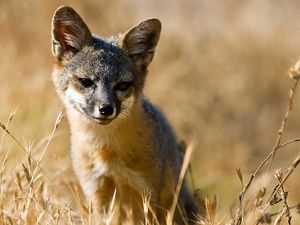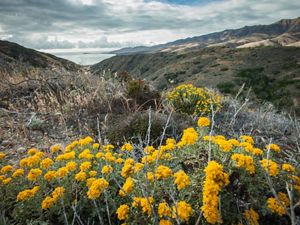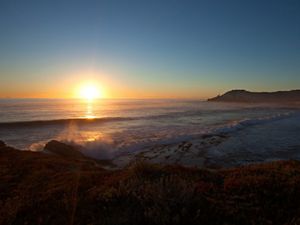Description
Twenty-five miles off the coast of southern California lies Santa Cruz Island, the largest of California’s eight Channel Islands. More than 1,000 species of plants and animals inhabit the island’s high peaks, deep canyons, pastoral valleys and 77 miles of dramatic coastline.
Once on the brink of ecological collapse, Santa Cruz Island now offers visitors a glimpse of what southern California used to be like hundreds of years ago.
After three decades of tireless work, Santa Cruz Island has emerged as a leading example for successful island restoration and innovative conservation. Today, TNC and its partners are focused on preserving the island’s unique plants and animals and sharing lessons learned in island restoration with other island conservation projects around the world.
Island History
When The Nature Conservancy purchased most of Santa Cruz Island in 1978, it was an island in crisis.
- Feral pigs and sheep—descendants of introduced domestic livestock—overgrazed the island, severely altering its natural systems and landscape.
- Ten species of plants and animals faced extinction, including the Santa Cruz Island fox—the island’s top predator for thousands of years.
- A new island predator—the golden eagle—moved in from the mainland to prey on piglets and island foxes, wiping out 95% of the fox population in less than a decade.
- The island’s native bald eagles, which are highly territorial and prey on fish rather than foxes, had been wiped out by DDT contamination nearly five decades ago, leaving golden eagles free to devastate the fox population.
An Island Comes Alive
The Nature Conservancy worked with its partners—the National Park Service, U.S. Fish and Wildlife Service and the Department of Fish and Game—to engage in an intensive, science-based restoration program to save the island fox and revitalize the natural communities of Santa Cruz Island.
As part of this effort, feral sheep and pigs were removed from the island and golden eagles were captured and relocated to the mainland. Bald eagle chicks were reintroduced and carefully raised and released into the wild.
Efforts to restore the fox population were initiated in 2002, and the fox program has been heralded as one of the fastest and most successful endangered species recovery programs in the country.
For the first time in over 150 years, the island is free of non-native animals and native species are flourishing.
Santa Cruz Island restoration milestones:
- Feral sheep removed in the 1980s
- Unprecedented removal of feral pigs in 18 months; the island has been pig-free since 2006
- More than 1,200 foxes now live in the wild, up from fewer than 100 in 2004
- Bald eagles now reside and nest successfully on the island, for the first time in over half a century
- No golden eagles have nested on the island since 2006
- Native plants are flourishing and are re-vegetating formerly barren hillsides
- Oak seedlings abound, now that the pigs—which feasted on oak acorns—are gone
Managing the Present, Protecting the Future
The restoration of Santa Cruz Island has been a resounding success and will allow thousands of visiting boaters and hikers each year to enjoy this unique landscape. However, managing human interaction with native plants and animals is vital to maintaining the island’s health. Our research, restoration and outreach efforts continue:
- Regular check-ups on the island’s radio-collared foxes to monitor their health and administer vaccinations for canine distemper—a disease easily contracted from domestic dogs illegally brought ashore by boaters
- Ongoing native plant restoration and invasive weed management activities
- Educating visitors on the importance of protecting the island’s delicate ecology and preventing the introduction of non-native species
- Vaccinating the rare and vulnerable island scrub-jay against West Nile virus, a disease that has yet to establish on the island but that is particularly deadly to this species
Did You Know...?
Santa Cruz Island harbors:
- More than 650 vascular plant species (75% of which are native)
- Over 200 species of birds
- Eight species of reptiles and amphibians
- Seven mammal species (three of which are bats)
- 12 species found nowhere else on Earth



